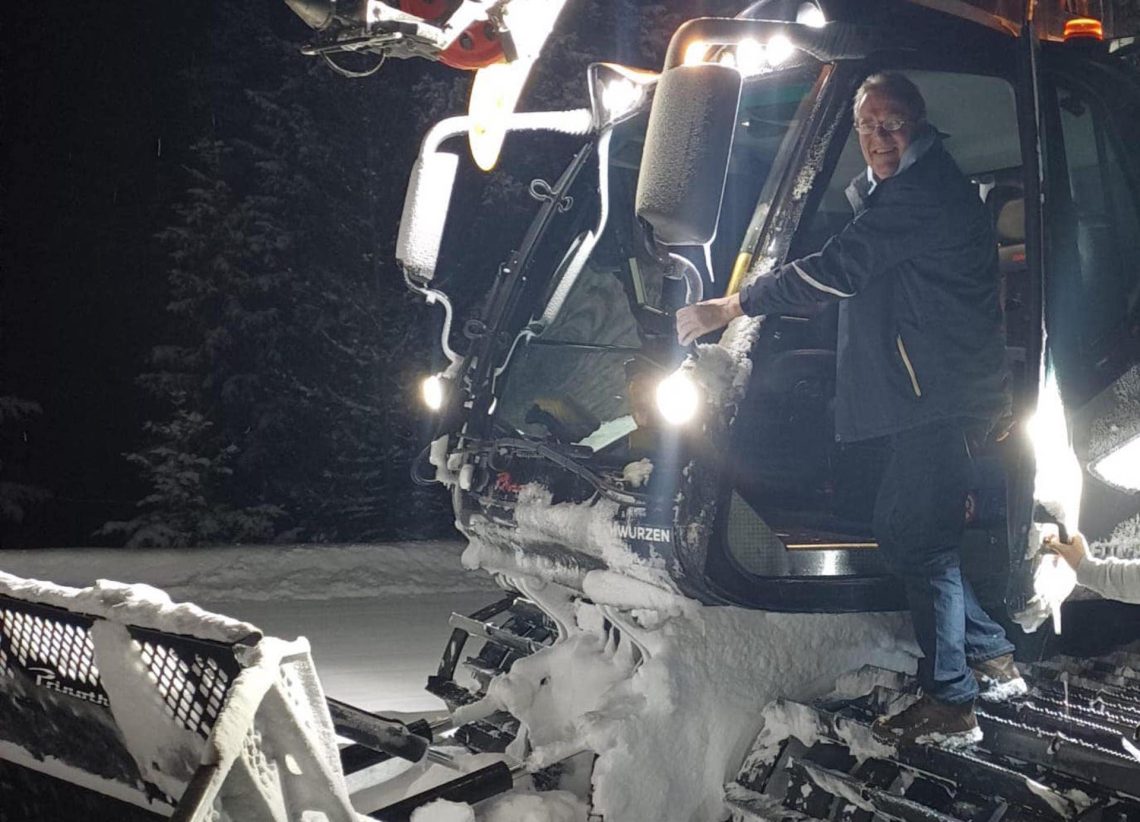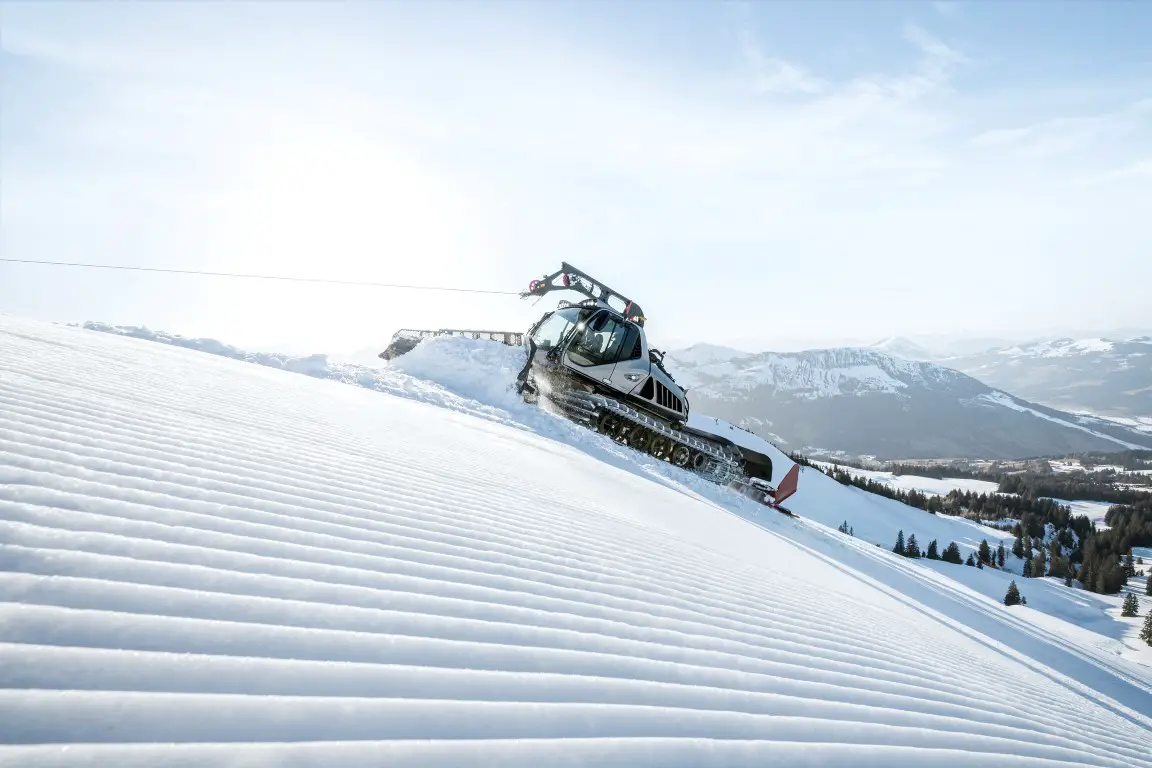Review – Prinoth Leitwolf, a 530 horsepower Swiss army knife for the slopes
Beautiful slopes
It is the weather forecast for next weekend (Feb. 4 and 5, 2023). With spring break approaching, that’s good news for the skiers among us. Wonderful slopes ahead! But they don’t get there by themselves. The pistenbullys have to get to work every evening and night for that. AutoRAI went on a report with the Prinoth Leitwolf.
Prinoth Leitwolf: the most powerful piste bully
It is mid-January 2023. At the appointed time, quarter to five in the afternoon, Kevin is waiting for us. He is the operator of a Prinoth Leitwolf, the heaviest and most powerful piste bully that Alpine piste repairers can buy. This does require an investment that, depending on the implementation, can reach about 450,000 euros. For slopes on a single mountain, it easily takes ten to get the job done in an evening.
Schladming-Hochwurzen
Kevin is one of the employees of the Schladming-Hochwurzen ski service, a ski area that is part of Austria’s Ski Amade. The Hochwurzen is the mountain where “our” bully machinist will be working tonight. At departure it is still light, but soon darkness will set in and then the powerful floodlights should provide good all-round visibility.
Ready for the climb
The six-cylinder in-line turbodiesel engine has been warming up at idle for some time, so it is battle-ready for the steep climb with gradients up to more than 50%! Kevin sits on a Recaro seat in the center of the cab, we as reporters next to him on a slightly reclined seat.
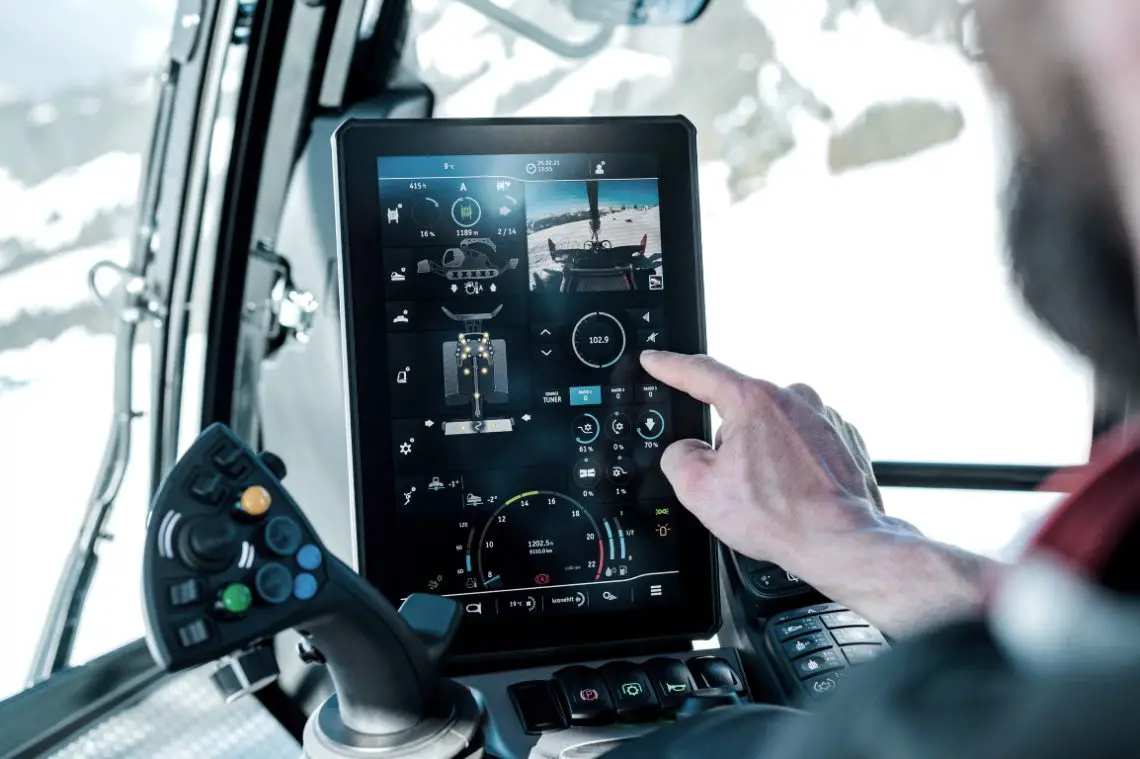
Fine tricks of the piste bully
Outside it is freezing, inside it is nice and warm and relatively quiet in the cabin despite the fact that the engine is working full power. A conversation is quite possible. Kevin explains that he has been doing the work for three years now. “The first year is the hardest because you still have to learn the intricacies,” he explains. “At first under the guidance of an experienced colleague, but soon you have to do it yourself. No, there is no training. All you need is a car license and beyond that it comes down to learning on the job.”
Steel cable and winch
Just below the top of the Hochwurzen, he stops the Leitwolf, gets out and attaches the bully’s steel cable to a bracket cast in concrete. After first setting the lighted beacons and lowering the barrier to indicate that the slope is closed due to preparation. The cable is connected to a winch, which automatically supports the piste bully when scrambling and working on the steepest parts.
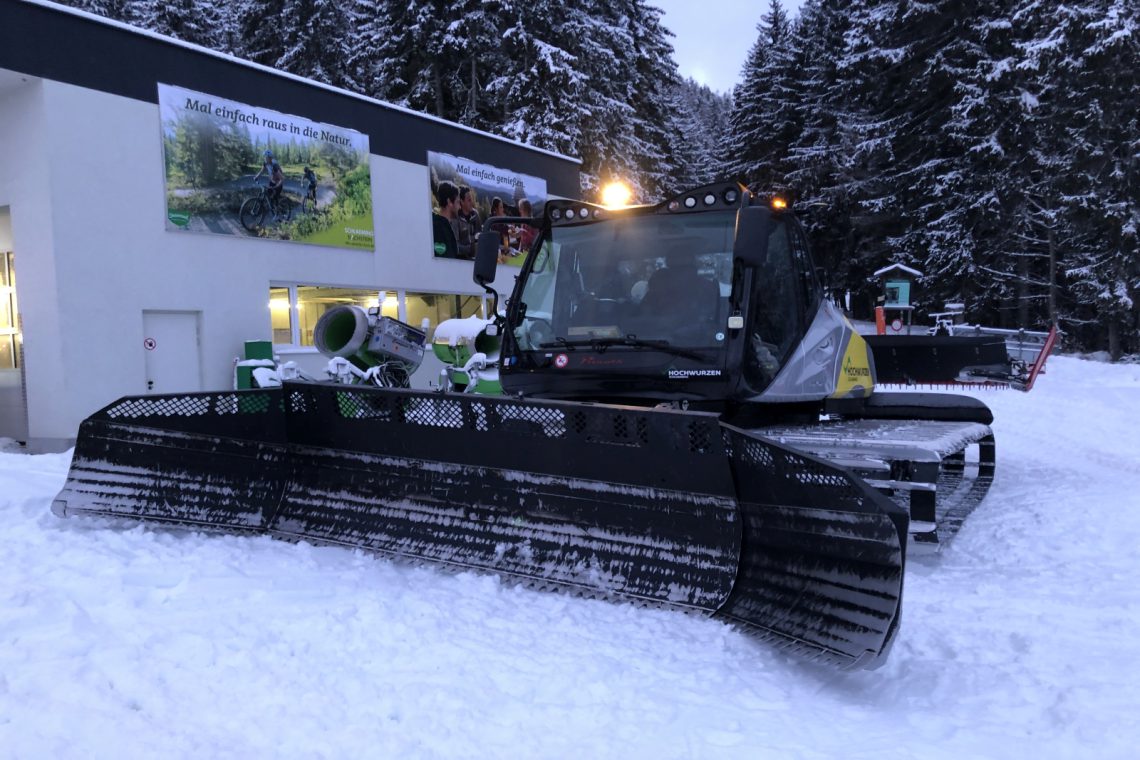
Slipping
Kevin explains that the pistenbully, with its more than a meter wide tracks, can get up pretty well under its own power. The winch and cable are needed primarily to prevent “slip” and slippage when turning. This would loosen the surface of the piste and then more work is needed to get and keep the piste right.
Bugles and blade
Preparation has begun. Over distances of several hundred meters, it goes down, turns and goes up again. The 4.5-meter-wide slide at the front tackles the worst snow bumps (bugles), and at the rear, a rolling cutter and the so-called “blade” ensure that a tight slope is created with the surface with a combed profile so prized by skiers.
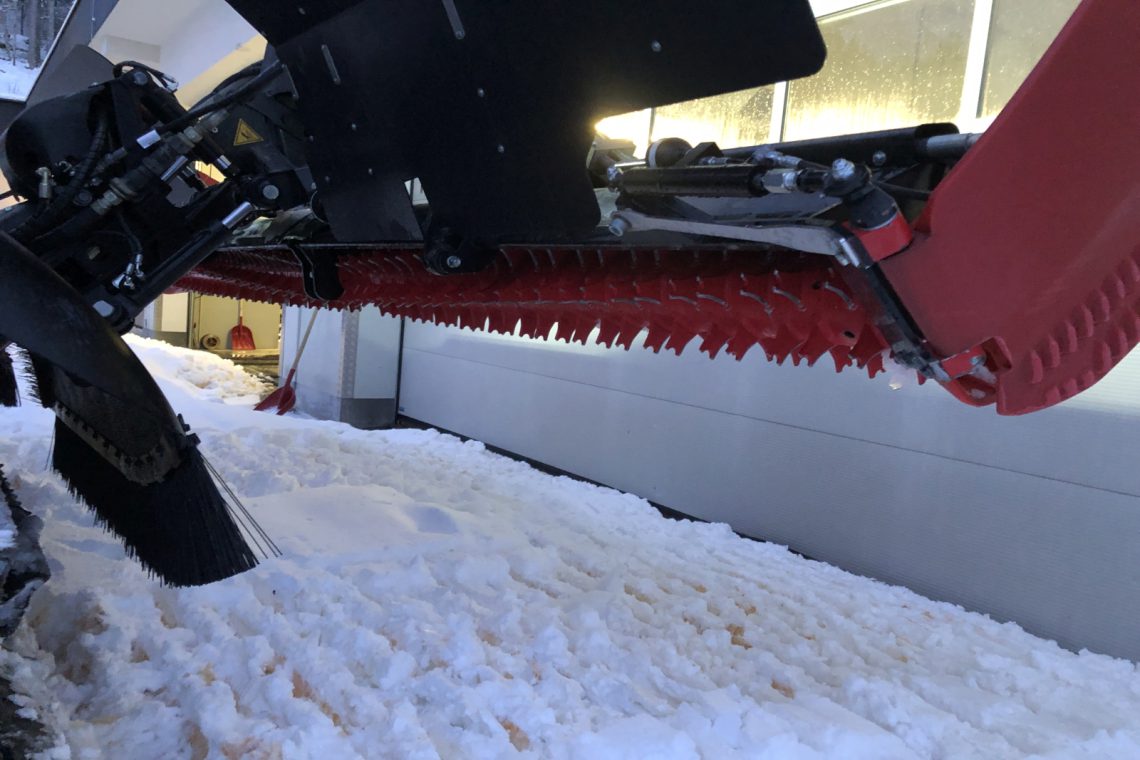
Rolls Royce engine
We pluck some figures from Prinoth’s website. The Prinoth Leitwolf has a 390 kW (530 hp) engine. At just 1,300 rpm, it delivers its maximum torque of 2,600 Nm. This 12.8-liter MTU 6R 1300 power unit is from the Rolls Royce Group and is also used in machines for forestry and agricultural applications.
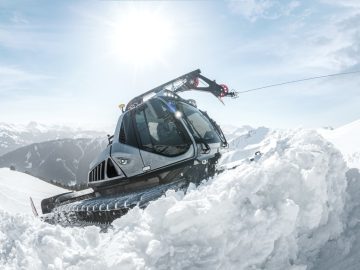

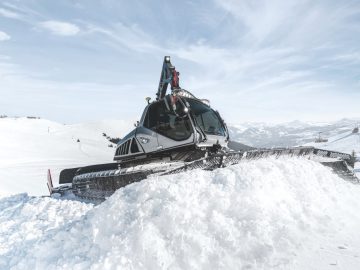
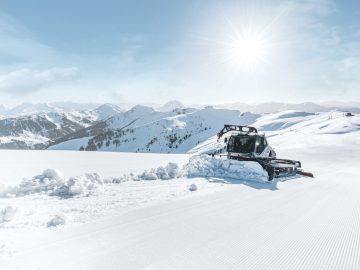
Behind the wheel of the Prinoth Leitwolf….
Kevin disconnects the cable and leads the device to a slope on the other side of the Hochwurzen. Again, the winch comes into play and after attaching the steel cable, Kevin explains and understands all the functions and controls. This is done with a joystick and touch screens. On the left side of the armrest are two levers for steering.

Sliding, turning, turning
Then there is a gas pedal. Pressing is driving, releasing is stopping. The joystick controls the front slide. These should not be too deep, as you will take a bite out of the slope. But also not too high because then you won’t slide the snow bumps away. At the same time, you steer with the levers on the left. The right up is steering to the right, left up to the left, both all the way up backwards and one all the way up is turning right or left in place.

Milling with the joystick
Kevin gets back to work. You can see that the pistenbully responds instantly to small hand movements. It is millimetering for the operator with the joystick to follow the curvature of the track with the slide. Using the levers on the left, he keeps the bully straight on track and at the same time keeps an eye on the display right in front of him that shows the snow thickness in color. “Red-colored parts are thin and you don’t want to take snow off that.”
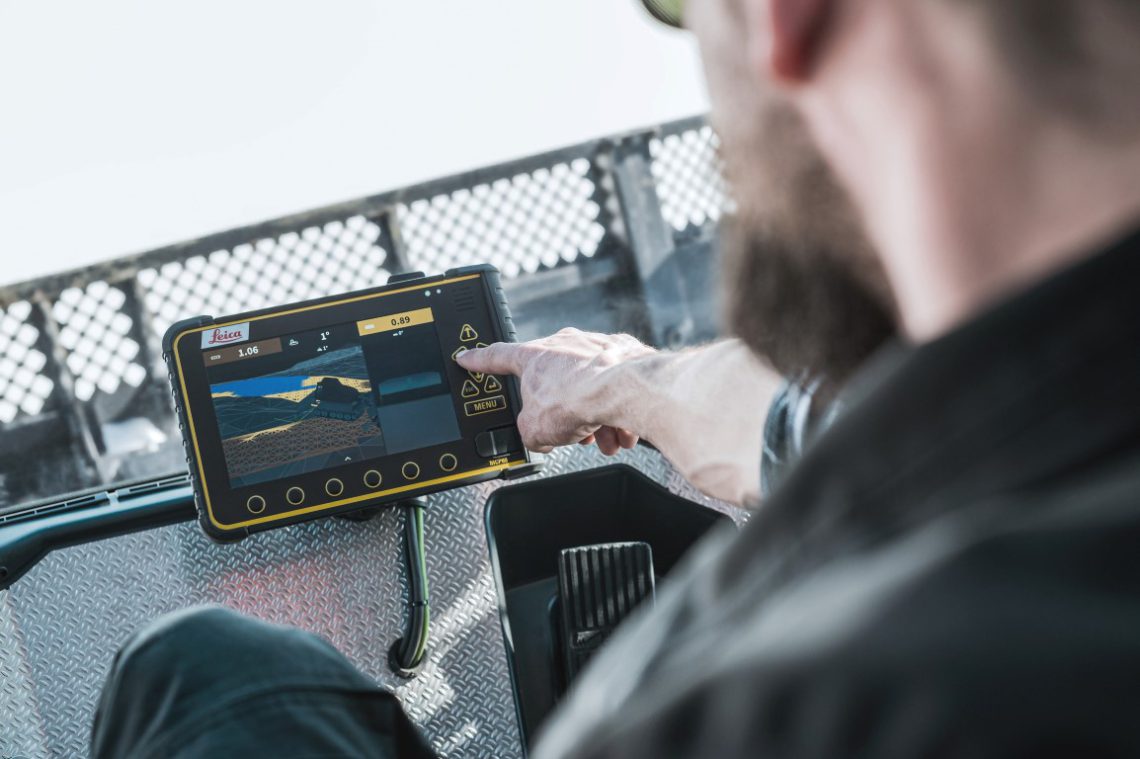
Preparation weapon
The joystick controls all the components for leveling the slope. It also allows the operator to elevator and lower the cutter and blade. The only thing you don’t have to worry about as a machinist is the winch. The cable arm above the roof automatically moves with it, and the winch motor rolls the cable up and down independently. Kevin: “Only thing is to regularly turn the other way around. That prevents a stroke in the wire rope that would prevent it from winding properly on the winch roller.”
Sip on a drink
After 3.5 hours, it’s time for refueling, so it’s back toward the garage at the base station. About three-quarters of the 180-liter tank capacity is through. On average, the Leitwolf consumes about 35 liters per hour. Quite a lot when you compare that to fuel consumption of a car. Just think: with that, you would cover an average of 65 km in an hour, which would have consumed 35 liters of fuel!
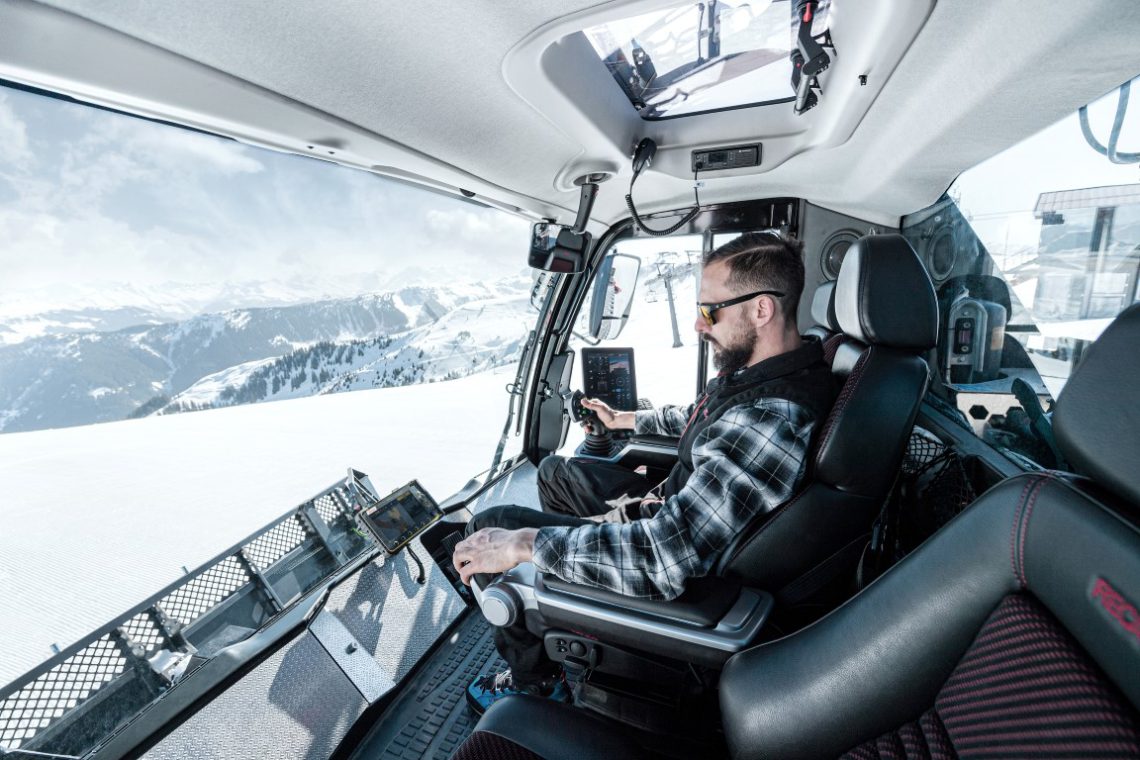
1,700 liters of diesel fuel per shift
We hit the math. That particular evening, six pistenbullys are at work on the Hochwurzen, all working for about eight hours. So those consume about 1,700 liters of diesel fuel in that one shift. And that’s just on one mountain and one evening/night. Calculate that over an entire ski season and then again over several mountains in a ski area. That’s quite a sip and a lot of money. To that is added the driver’s salary, depreciation of the machine plus maintenance costs.
Ski pass price? Hmm, not too bad actually
That puts the price of a 6-day ski pass in a different light. You currently spend 300 euros or a little more on that. The elevators, and they cost energy and maintenance, you may go in with that. However, we realize after this report that the proceeds from the ski passes also go toward preparing the slopes. If that didn’t happen…. Well, forget about skiing! In any case, it is understandable why a ski pass costs so much, but what is much? It’s actually not so bad when you see what all has to be done for that.
This report came about thanks in part to the cooperation of Kevin and the company he works for.
